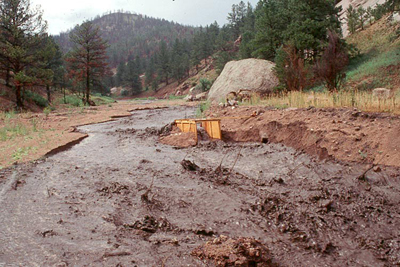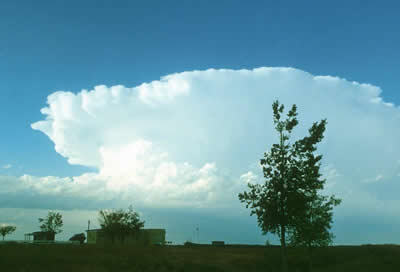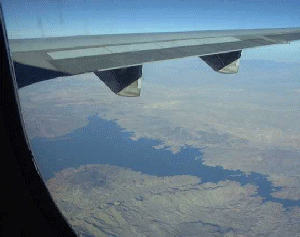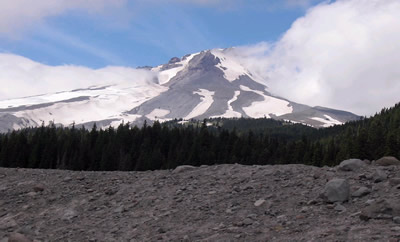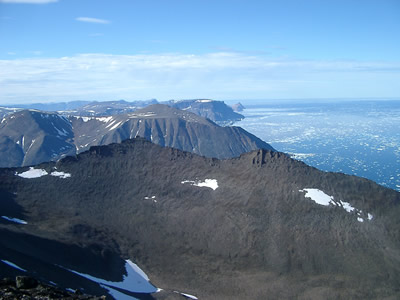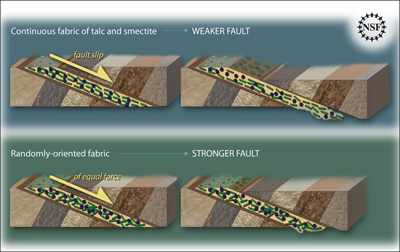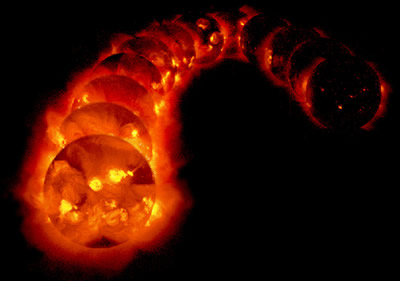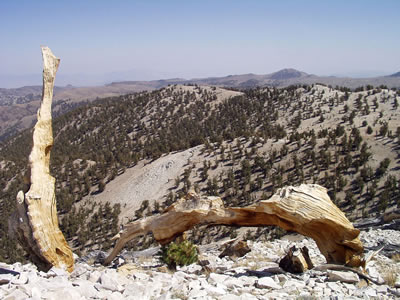Click on image for full size
Courtesy of the U.S. Geological Survey
Forecasting Flash Floods in Colorado's Mountains
News story originally written on July 22, 2008
Dangerous flash floods have killed hundreds of people and caused hundreds of millions of dollars of damage in the Front Range of Colorado’s Rocky Mountains. The area gets summer flash floods when intense thunderstorms release rainwater quickly into steep mountain valleys.
Soon people living near creeks and rivers in the Front Range will be warned of dangerous flash floods, thanks to a new forecasting tool being tested by the National Center for Atmospheric Research (NCAR).
"Since flash floods are complex and fast-moving events, we need to know about both weather and ground conditions in order to predict them," explains NCAR scientist David Yates.
Flash floods are difficult to predict because they happen suddenly. Weather forecasters can tell when conditions might lead to flooding. Their radars can detect heavy rain and can tell when a storm has stopped moving, releasing lots of water in one area. But flash floods don’t happen every time it rains. They also depend on the soil, the shape of the land and the shape of the river or stream.
The new forecasting tool combines weather information with information about the water flowing in streams and the shape of the land. It can give people at least 30 minutes warning before flood waters start rising and possibly as much as an hour or two.
"If we can show that our system has some reasonable skill in predicting floods, we think officials may become more interested in using it along with their existing suites of tools," says NCAR scientist David Gochis.


